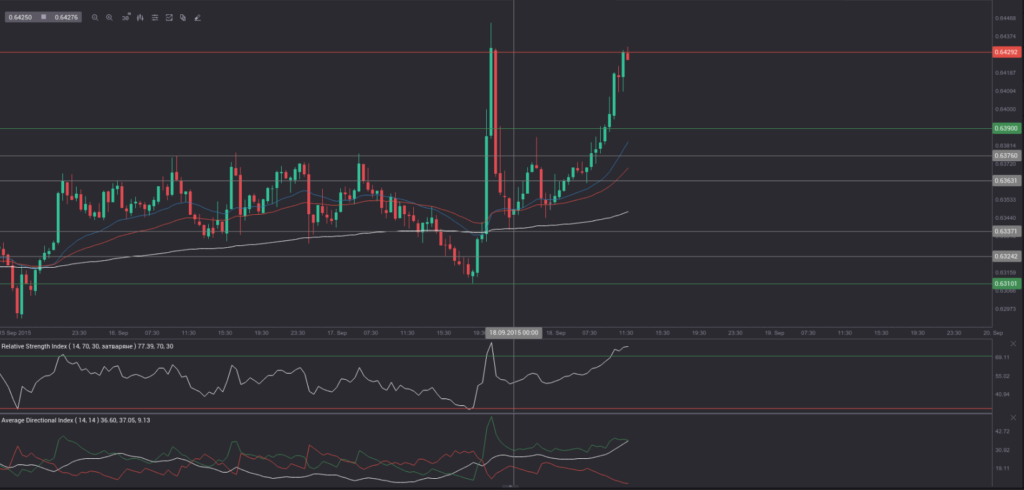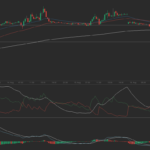Yesterday’s trade saw NZD/USD within the range of 0.6308-0.6452. The pair closed at 0.6350, losing 0.31% on a daily basis. It has been the first drop in the past five trading days. The daily high has been the highest level since August 31st, when the cross registered a high of 0.6481.
At 9:23 GMT today NZD/USD was up 1.27% for the day to trade at 0.6429. The pair tested the upper range breakout level (R4), as it touched a daily high at 0.6432 at 9:25 GMT.
Today the cross may be influenced by a number of macroeconomic reports as listed below.
Fundamentals
United States
CB Leading Economic Indicator
The Conference Board Leading Economic Index for the United States probably increased 0.2% in August compared to a month ago, according to the median estimate by experts. In July the index unexpectedly dropped at a monthly rate of 0.2%. It has been the first decrease since March 2013, when a 0.2% slump was registered.
It encompasses a variety of economic indicators, which signify possible changes in overall economic activity. The index is comprised by the following components: average weekly hours in manufacturing, average weekly initial claims for unemployment insurance, manufacturers’ new orders, consumer goods and materials, ISM Index of New Orders, manufacturers new orders, non-defense capital goods excluding aircraft orders, building permits, new private housing units, Stock prices, 500 common stocks, Leading Credit Index, interest rate spread, 10-year Treasury bonds less federal funds, average consumer expectations for business conditions. Better-than-expected performance of the index is usually dollar positive. The Conference Board will release the official data at 14:00 GMT.
Fed’s rate decision
The US dollar lost ground against most of its major peers yesterday, after the Federal Reserve decided to leave the target range for the federal funds rate unchanged at 0 to 0.25%, stressing on concerns that global economic and financial developments may curb economic activity and suppress consumer price inflation even further in a short term.
According to extracts from the FOMC Statement, released yesterday: “Recent global economic and financial developments may restrain economic activity somewhat and are likely to put further downward pressure on inflation in the near term. Nonetheless, the Committee expects that, with appropriate policy accommodation, economic activity will expand at a moderate pace, with labor market indicators continuing to move toward levels the Committee judges consistent with its dual mandate. The Committee continues to see the risks to the outlook for economic activity and the labor market as nearly balanced but is monitoring developments abroad.”
“To support continued progress toward maximum employment and price stability, the Committee today reaffirmed its view that the current 0 to 1/4 percent target range for the federal funds rate remains appropriate. In determining how long to maintain this target range, the Committee will assess progress–both realized and expected–toward its objectives of maximum employment and 2 percent inflation.”
“The Committee anticipates that it will be appropriate to raise the target range for the federal funds rate when it has seen some further improvement in the labor market and is reasonably confident that inflation will move back to its 2 percent objective over the medium term.”
Bond Yield Spread
The yield on New Zealands 2-year government bonds went as high as 2.510% on September 17th, after which it slid to 2.500% at the close to add 2 basis points (0.02 percentage point) on a daily basis, while marking the second consecutive trading day of gains.
The yield on US 2-year government bonds climbed as high as 0.815% on September 17th, after which it fell to 0.686% at the close to lose 12.5 basis points (0.125 percentage point) for the day. It has been the first drop in the past four trading days.
The spread between 2-year New Zealand and 2-year US bond yields, which reflects the flow of funds in a short term, expanded to 1.814% on September 17th from 1.669% during the prior day. The September 17th yield spread has been the largest one since September 9th, when the difference was 1.854%.
Meanwhile, the yield on New Zealands 10-year government bonds soared as high as 3.395% on September 17th, after which it slid to 3.385% at the close to add 3.5 basis points (0.035 percentage point) compared to September 16th, while marking a third straight day of gains.
The yield on US 10-year government bonds climbed as high as 2.298% on September 17th, after which it slipped to 2.196% at the close to lose 10 basis points (0.100 percentage point) on a daily basis. It has been the first decrease in the past three trading days.
The spread between 10-year New Zealand and 10-year US bond yields expanded to 1.189% on September 17th from 1.054% during the prior day. The September 17th yield difference has been the largest one since August 20th, when the spread was 1.212%.
Daily and Weekly Pivot Levels
By employing the Camarilla calculation method, the daily pivot levels for NZD/USD are presented as follows:
R1 – 0.6363
R2 – 0.6376
R3 (range resistance) – 0.6390
R4 (range breakout) – 0.6429
S1 – 0.6337
S2 – 0.6324
S3 (range support) – 0.6310
S4 (range breakout) – 0.6271
By using the traditional method of calculation, the weekly pivot levels for NZD/USD are presented as follows:
Central Pivot Point – 0.6330
R1 – 0.6418
R2 – 0.6520
R3 – 0.6608
S1 – 0.6228
S2 – 0.6140
S3 – 0.6038






